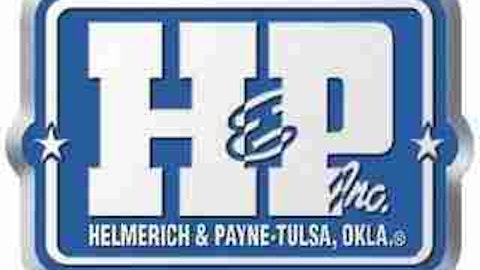
Growth in low cost deposits and geographical expansion
Capital Bank Financial Corp (NASDAQ:CBF) (formerly known as North American Financial) is a holding company of Capital Bank. Former vice chairman of Bank of America Corp (NYSE:BAC), Gene Taylor is the chief executive of Capital Bank. In the first quarter of 2013, Capital Bank Financial Corp (NASDAQ:CBF) reported net income of $5.6 million compared with a net income of $5.3 million in the fourth quarter of 2012. The first quarter ended with a Tier 1 leverage ratio of 13.2% and tangible book value of $17.89 per share. In terms of loan production, Capital Bank Financial Corp (NASDAQ:CBF) originated $251.4 million in the first quarter of 2013.
In 2012, the acquisition of Southern Community proved to be a growth story in deposits. The acquisition also gave the bank a different geographical location to place its footprint. Most of the loans of Capital Bank Financial Corp (NASDAQ:CBF) are owner-occupied commercial real estate and account for 61% of the total commercial real state loans, while commercial and residential stand second and third, respectively.
During the first quarter of 2013, the cost of deposits dropped 3 bps to 0.5%, which is expected to decline further. So, the anticipated drop in the cost of deposits coupled with geographical expansion due to the recent acquisition will play a key role in the growth of the coming quarters.
Surge in commercial lending
National Bank Holdings Corp (NYSE:NBHC) operates as the bank holding company for Bank Midwest, which provides financial services to customers with 101 banking service centers. The majority of these centers are located in Kansas, Missouri, and Colorado. In the first quarter of 2013, the company reported net income of approximately $2.1 billion, down from $3 billion in the last quarter of 2012. The company has $5.2 billion in net assets and deposits of $2.4 billion. National Bank Holdings Corp (NYSE:NBHC) declared a quarterly dividend of $0.05 per common share.
National Bank Holdings Corp (NYSE:NBHC) announced that it is increasing its dividend from $0.83 a share to $0.87 a share. National Bank is also focused on commercial lending, with total outstanding loans of $490 million, representing 67% of the total loans. With such large exposure to the US commercial lending sector, the bank will poised to benefit from the surge in the US commercial lending.
The US is witnessing double-digit growth in commercial and industrial loans. Besides, the lending standards for commercial and industrial lending continue to ease. These relaxed standards will further help National Bank Holdings Corp (NYSE:NBHC) originated more loans.
Growing low-cost deposits
Regions Financial Corporation (NYSE:RF) is one of the largest service providers of retail and commercial banking, mortgage and insurance products and services. After several years of losses, Regions Financial Corporation (NYSE:RF) has now turned into profit in the first quarter of 2013. In 2008, the company reported net losses as high as $5.5 billion. However, since the beginning of the year, the stock price has appreciated 18%.
The company’s financials display strong growth. In the first quarter of 2013, Regions reported net income of $1.1 billion, compared with a $0.2 billion loss in the last quarter of 2012. The capital position remains solid with a Tier 1 ratio of 12.3%. Tangible book value was $7.29 per share, an increase of $0.18 over the preceding quarter.
Regions Financial Corporation (NYSE:RF) disclosed its plan to repurchase $350 million in common shares and will obtain board approval to increase its dividend to $0.03 per share. In the first quarter of 2013, commercial and industrial loans grew 10% year-over-year. It’s low-cost deposits grew to $375 million, around 86% of the total deposits, compared to 80% last year. Regions’ entire focus is on residential and commercial banking products and services, which will enhance its future growth.
However, low interest rates and the slow-moving US economy would place some obstacles for Regions if these economic conditions continue for the remainder of 2013. For Regions, analysts estimated a mean target price of $9.01 and a target range of between $7 and $10.50.
Comparison of Liquidity ratio
If we calculate the liquidity ratios of the aforementioned banks for a comparison, Capital Bank Financial Corp (NASDAQ:CBF) has the highest loan-to-deposit ratio of 81%. In comparison, Regions Financial Corporation (NYSE:RF) and National Bank Holdings Corp (NYSE:NBHC) have 79% and 43% loans-to-deposit ratios, respectively. Generally 100% is considered as an ideal liquidity ratio for banks. A ratio below 1 means banks are more liquid but it generally affects the profitability of banks. Therefore, I believe Capital Bank is ideally positioned in terms of both profitability and liquidity
Conclusion
Although regional banks have posed some risks, the rebounding real estate markets in the U.S will benefit both National Bank and Capital Bank. Regions Financial Corporation (NYSE:RF) has a competitive edge of owning low-cost deposits, which are growing. Also, Regions’ cost control is better than its peers, which I believe will continue to improve in the future.
The article Reasons to Buy These Undervalued Banks originally appeared on Fool.com and is written by Red Chip.
Red Chip has no position in any stocks mentioned. The Motley Fool has no position in any of the stocks mentioned. Red is a member of The Motley Fool Blog Network — entries represent the personal opinion of the blogger and are not formally edited.
Copyright © 1995 – 2013 The Motley Fool, LLC. All rights reserved. The Motley Fool has a disclosure policy.




